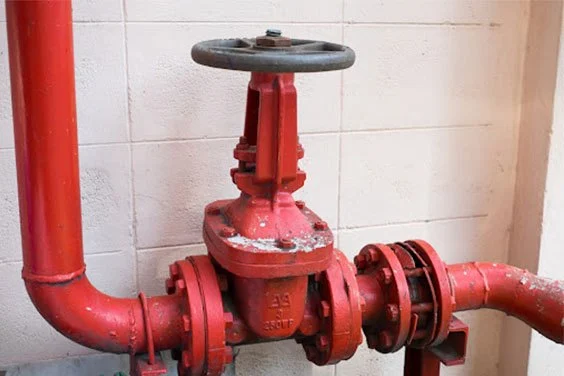
- 1. Understanding the Differences Between Gate and Ball Valves
- 2. When to Replace a Gate Valve
- 3. When to Replace a Ball Valve
- 4. How to Replace a Gate Valve
- 5. How to Replace a Ball Valve
- 6. Choosing the Right Valve for Your System
1. Understanding the Differences Between Gate and Ball Valves
When it comes to plumbing systems, both gate and ball valves are common choices for controlling water flow. However, these two types of valves function differently and are used in various scenarios depending on the requirements of the system. Understanding these differences is essential before replacing or installing one of them.
1.1 Gate Valves
Gate valves are primarily designed to start or stop the flow of water. They are characterized by a wedge-shaped gate that moves up or down when the valve is turned. The primary advantage of a gate valve is that it provides full flow when open, meaning there is minimal resistance to water flow. However, gate valves are not ideal for regulating flow; they are typically either fully open or fully closed.
1.2 Ball Valves
Ball valves, on the other hand, are used for both stopping and regulating the flow of water. They contain a spherical ball with a hole in the center that rotates to allow or block the flow. Ball valves are more reliable than gate valves for controlling flow because they can be adjusted to partially open or fully close the valve, providing more precise control. They are also more durable and require less maintenance over time.
2. When to Replace a Gate Valve
Gate valves are commonly found in older plumbing systems, and while they are effective for turning the water flow on or off, they may need to be replaced over time due to wear and tear or corrosion. Here are some scenarios when you might need to replace a gate valve:
2.1 Difficulty in Operating the Valve
If you are having trouble turning the valve handle, it could be a sign that the internal components are worn out. Gate valves are prone to seizing or getting stuck, especially if they are rarely used, leading to operational difficulties.
2.2 Leaking Around the Valve
A common issue with gate valves is leaking. If you notice water leaking around the valve stem or body, it may indicate a faulty seal or corrosion inside the valve, signaling the need for a replacement.
2.3 Corrosion or Damage
If the valve has visible corrosion or physical damage, it may no longer function properly. Corroded gate valves are less reliable and can cause water flow issues or leaks in the system, so replacing them is important for maintaining the integrity of your plumbing.
3. When to Replace a Ball Valve
Ball valves are generally more durable than gate valves, but they too can experience problems that necessitate replacement. Here are some reasons why you might need to replace a ball valve:
3.1 Leaking or Dripping
If your ball valve is leaking water or dripping, even when fully closed, the internal seals may be damaged. This often happens due to wear, age, or exposure to harsh conditions, and it typically requires replacing the valve to prevent further water loss.
3.2 Difficulty in Turning the Valve
Ball valves should operate smoothly and easily. If you find it hard to turn the valve handle, this could be a sign that the valve components are damaged or seized up, which means it may need to be replaced.
3.3 Corrosion or Physical Damage
Just like gate valves, ball valves are susceptible to corrosion, especially if they are exposed to water with high mineral content. If you notice visible damage, such as cracks or rust, it's time to replace the valve to prevent leaks or system failure.
4. How to Replace a Gate Valve
Replacing a gate valve is a relatively straightforward process if you follow the right steps. Here’s how you can do it:
4.1 Turn Off the Water Supply
The first step in replacing any valve is to turn off the water supply. Make sure the water is completely shut off to avoid leaks or flooding during the replacement process.
4.2 Remove the Old Valve
Use a pipe wrench to loosen the nuts or bolts securing the valve in place. Once the valve is free, carefully remove it. You may need to use a hacksaw if the valve is corroded or tightly attached to the pipes.
4.3 Install the New Gate Valve
Install the new gate valve by aligning it with the pipes and securing it with the appropriate fittings. Use plumber’s tape to ensure a tight seal and prevent leaks. Once the valve is in place, tighten the connections securely.
4.4 Test the New Valve
Turn the water back on and test the new valve by opening and closing it. Check for any leaks around the valve and ensure it operates smoothly.
5. How to Replace a Ball Valve
Replacing a ball valve follows a similar process, but the difference lies in the type of valve and the mechanism for controlling the water flow. Here’s a step-by-step guide to replacing a ball valve:
5.1 Shut Off the Water Supply
As with any valve replacement, start by turning off the water supply to avoid flooding or damage during the replacement.
5.2 Remove the Old Ball Valve
Use a pipe wrench to remove the old ball valve by loosening the nuts or bolts connecting the valve to the pipes. If the valve is corroded or stuck, you may need a hacksaw or a pipe cutter to detach it from the system.
5.3 Install the New Ball Valve
Install the new ball valve in the same position as the old one. Make sure it’s oriented correctly, and tighten the connections with a wrench. Apply plumber’s tape to the threads for a secure, leak-free fit.
5.4 Check for Leaks
Once the new valve is installed, turn the water supply back on and check for any leaks. Open and close the valve to ensure smooth operation.
6. Choosing the Right Valve for Your System
When deciding between a gate valve and a ball valve, it’s important to consider the needs of your plumbing system. Gate valves are best for applications where you need a full-on or full-off option without the need for flow regulation. Ball valves, on the other hand, are more versatile, offering precise control over flow and greater reliability.
If you’re not sure which valve is best for your system, consider consulting a professional. For quality valves and professional advice, visit Plumbers Supply Hub for expert recommendations and high-quality products.

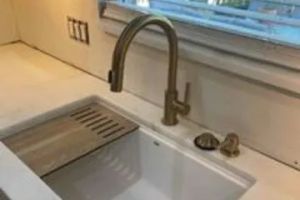






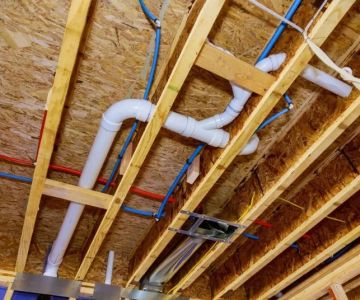
 Poremski Michael F Plumbing & Heating4.0 (18 reviews)
Poremski Michael F Plumbing & Heating4.0 (18 reviews) Prestige Plumbing Inc.4.0 (25 reviews)
Prestige Plumbing Inc.4.0 (25 reviews) Plumbing And More With JB LLC4.0 (6 reviews)
Plumbing And More With JB LLC4.0 (6 reviews) Zoom Drain5.0 (297 reviews)
Zoom Drain5.0 (297 reviews) Marathon Plumbing Service, LLC4.0 (16 reviews)
Marathon Plumbing Service, LLC4.0 (16 reviews) Hosack Plumbing, Heating & Cooling5.0 (32 reviews)
Hosack Plumbing, Heating & Cooling5.0 (32 reviews)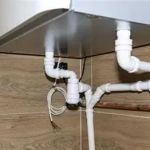 How to Repair a Condensation Issue on Cold Pipes
How to Repair a Condensation Issue on Cold Pipes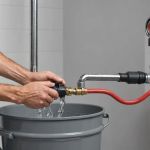 How to Safely Drain a Water Heater Before Moving
How to Safely Drain a Water Heater Before Moving How to Choose the Right Sealant for Pipe Joints
How to Choose the Right Sealant for Pipe Joints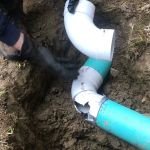 How to Replace a Broken Drain Elbow | Plumbers Supply Hub
How to Replace a Broken Drain Elbow | Plumbers Supply Hub How to Install a Pot Filler Faucet in the Kitchen: A Step-by-Step Guide
How to Install a Pot Filler Faucet in the Kitchen: A Step-by-Step Guide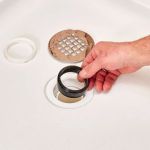 How to Replace a Floor Drain Strainer: A Step-by-Step Guide
How to Replace a Floor Drain Strainer: A Step-by-Step Guide